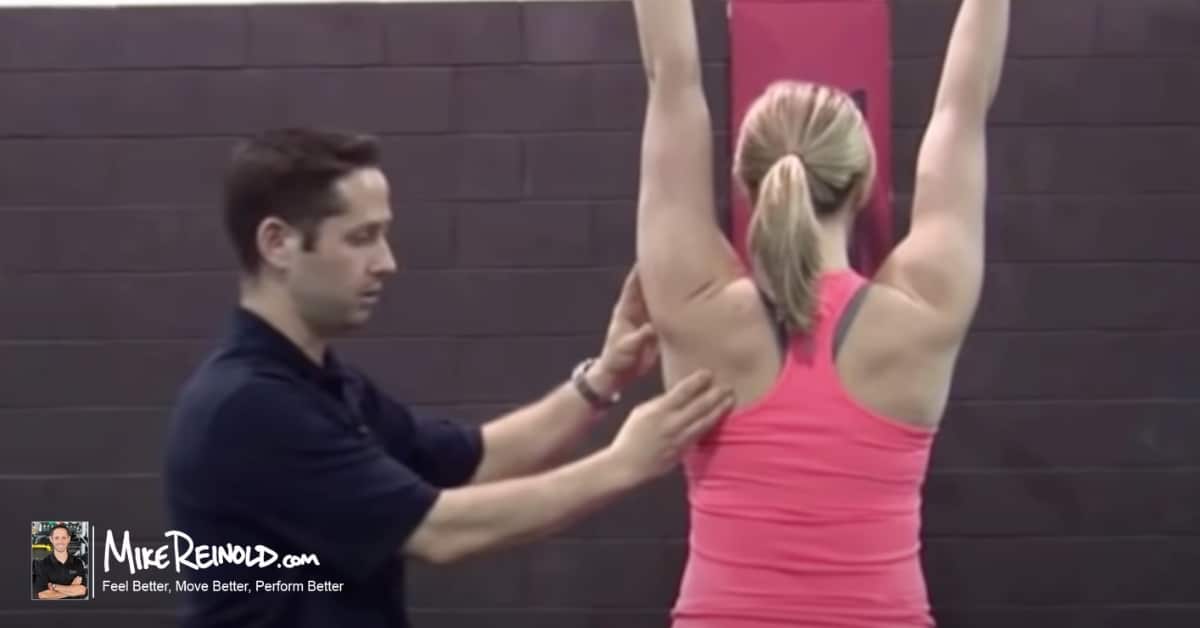A common part of my clinical examination of the shoulder includes assessing for abnormal scapular position and movement, or scapular dyskinesis. Scapular dyskinesis has long been theorized to predispose people to shoulder injuries, although the evidence has been conflicting.
Whenever data is conflicting in research articles, you need to closely scrutinize the methodology. One particular flaw that I have noticed in some studies looking at the role of scapular dyskinesis in shoulder dysfunction has involved how they assess and define scapular dyskinesis.
Like anything else, when someone has a significant issue with scapular dyskinesis it is very apparent and obvious on examination. But being able to detect subtle alterations in the movement of the scapula may be more clinically relevant.
There’s a big difference between someone that has a large amount of winging while concentrically elevating their arm versus someone that has a mild issue with control of the scapula while eccentrically lowering their arm.
Most people will not have a large winging of their scapula while elevating their arms. This represents a more significant issue, such as a nerve injury. However, a mild amount of scapular muscle weakness can change the way the scapula moves and make it difficult to control while lowering.
A thorough assessment of the shoulder must look at the posture and dynamic mobility of both the shoulder and scapula. More importantly, we need to assess the interaction between the shoulder and scapula and not look at the two in isolation.
A Simple Test for Scapular Dyskinesis
The first thing you should do is start simple and check the resting scapular position to see if any obvious winging is occurring in just the static resting posture.
However, realize that resting scapular position isn’t super important by itself. You should assess both resting position and dynamic movements.
One of the simplest assessments you can perform for scapular dyskinesis is watching the scapula move during shoulder flexion. Performing visual assessment of the scapula during shoulder flexion has been shown to be a reliable and valid way to assess for abnormal scapular movement.
That’s it. Crazy, right? That simple!
Yet, I’m still amazed at how many times people tell me no one has ever looked at how well their scapula moves with their shirt off.
However, there is one little tweak you should also do when performing this assessment…
Add a weight in their hand!
Here is a great example of someone’s scapular dyskinesis when performing shoulder flexion with and without an external load. The photo on the left uses no weight, while the photo on the right uses a 4 pound dumbbell:

As you can see, the image on the right shows a striking increase in scapular dyskinesis. I was skeptical after watching him lift his arm without weight in the photo on the left, however, everything became very clear when adding a light weight to the shoulder flexion movement. With just a light load, the ability to prevent the scapula from winging while eccentrically lowering the arm becomes much more challenging.
I should also note that there was really no significant difference in scapular control or movement during the concentric portion of the motion raising his arms overhead:

This person doesn’t have a significant issue or nerve damage, he simply just needs some strengthening of his scapular muscles to control eccentric lowering. But if you didn’t observe his scapula with his shirt off or with a dumbbell in his hand, you may have missed it!
Assessing Shoulder and Scapular Dynamic Mobility
The next step is to combine our assessment of scapular dyskinesia with the dynamic movement of the shoulder.
Altered scapular dynamic movement can be influenced by many things, so a thorough assessment is needed.
Here is a clip from my Functional Stability Training for the Upper Body program. This is part of a lab demonstration of Eric Cressey and I assessing overhead arm elevation and the quality of shoulder and scapular mobility.
In this video, you can clearly see a side-to-side difference and we discuss some of the potential implications:
Learn How to Assess and Treat Scapular Dyskinesis
If you really want to take your knowledge of assessing the treating the scapular to the next level, I have a bunch of great content in my Inner Circle Online Mentorship, including the following presentations:
- Assessing Scapular Position
- Assessing Scapular Movement
- 5 Tips for Treating Scapular Winging
- Current Concepts in the Evaluation and Treatment of Scapular Dyskinesis






